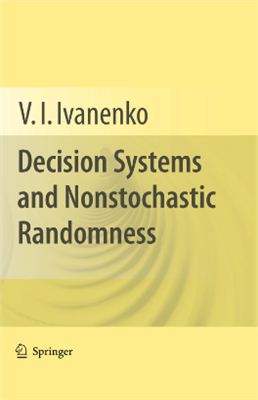Springer Science+Business Media, LLC 2010. - 272 pages
"Decision Systems and Nonstochastic Randomness presents the first mathematical formalization of the statistical regularities of non-stochastic randomness and demonstrates how these regularities extend the standard probability-based model of decision making under uncertainty, allowing for the description of uncertain mass events that do not fit standard stochastic models. Each self-contained chapter of this neatly-structured monograph includes a detailed introduction and summary of its contents. The included results are presented not only with rigorous proofs but also through numerous intuitive examples. An appendix is provided which includes classic results from the theory of functions and measured sets as well as decision theory, offering an overview of the necessary prerequisites. The formalism of statistical regularities developed in this book will have a significant influence on decision theory and information theory as well as numerous other disciplines. Because of these far-reaching implications, this book may be a useful resource for statisticians, mathematicians, engineers, economists and other utilizing nonstochastic modeling and decision theory.
"Decision Systems and Nonstochastic Randomness presents the first mathematical formalization of the statistical regularities of non-stochastic randomness and demonstrates how these regularities extend the standard probability-based model of decision making under uncertainty, allowing for the description of uncertain mass events that do not fit standard stochastic models. Each self-contained chapter of this neatly-structured monograph includes a detailed introduction and summary of its contents. The included results are presented not only with rigorous proofs but also through numerous intuitive examples. An appendix is provided which includes classic results from the theory of functions and measured sets as well as decision theory, offering an overview of the necessary prerequisites. The formalism of statistical regularities developed in this book will have a significant influence on decision theory and information theory as well as numerous other disciplines. Because of these far-reaching implications, this book may be a useful resource for statisticians, mathematicians, engineers, economists and other utilizing nonstochastic modeling and decision theory.

